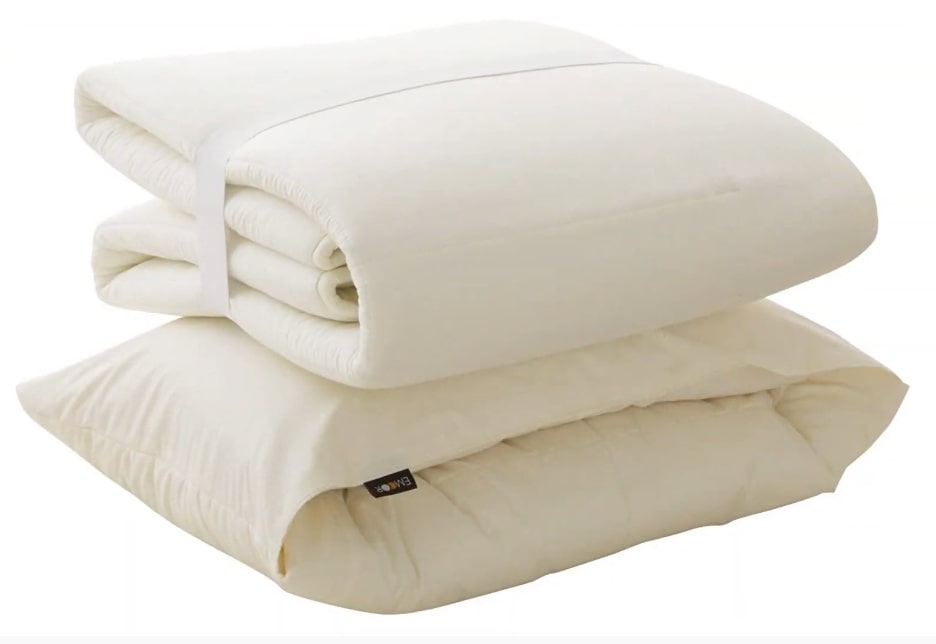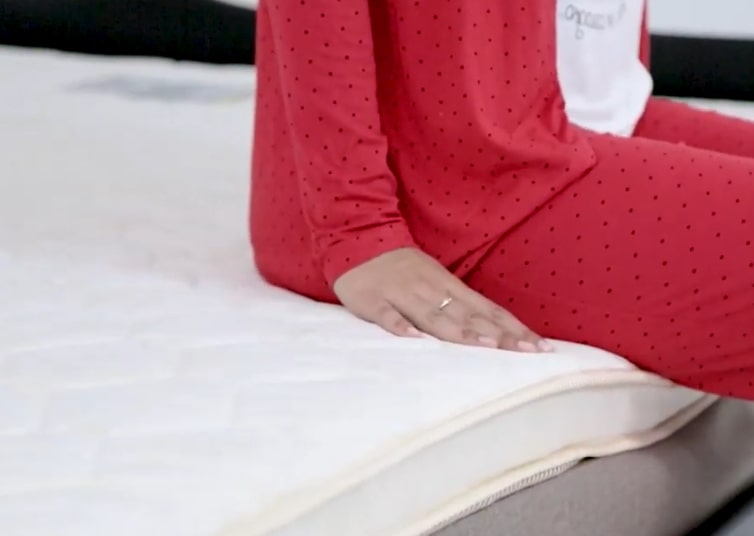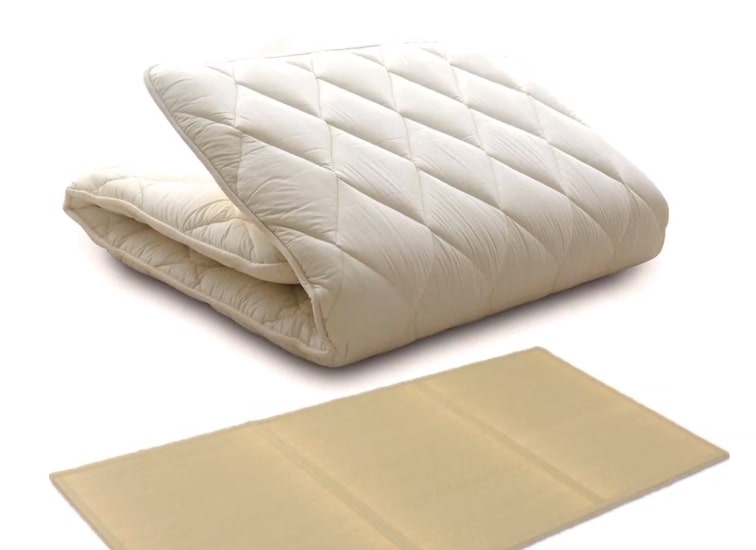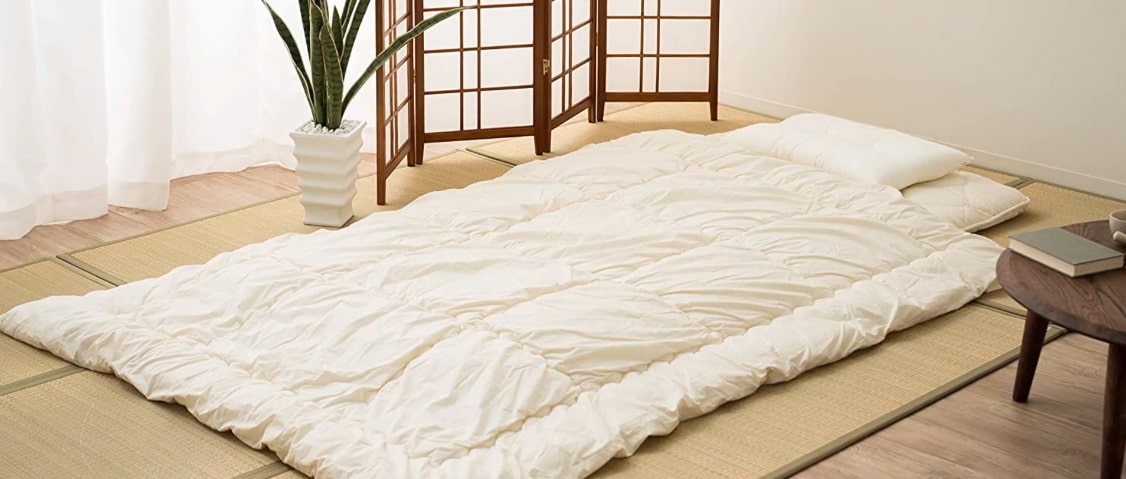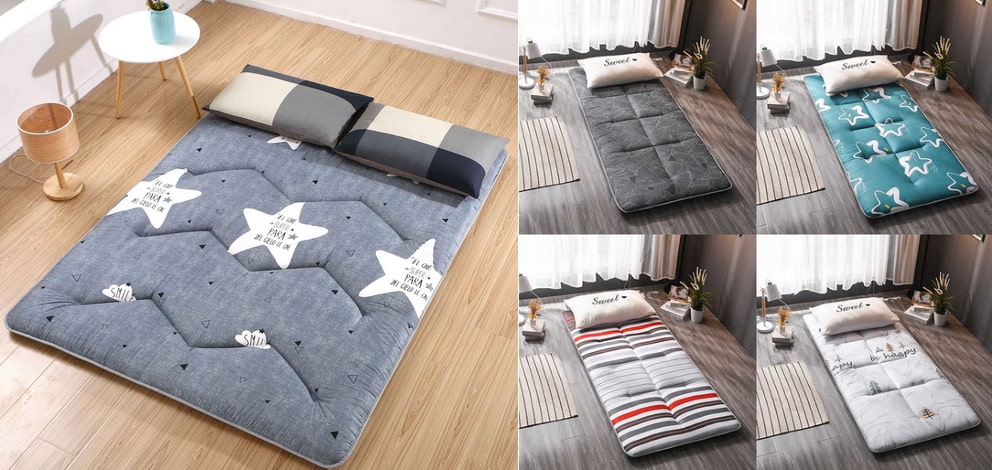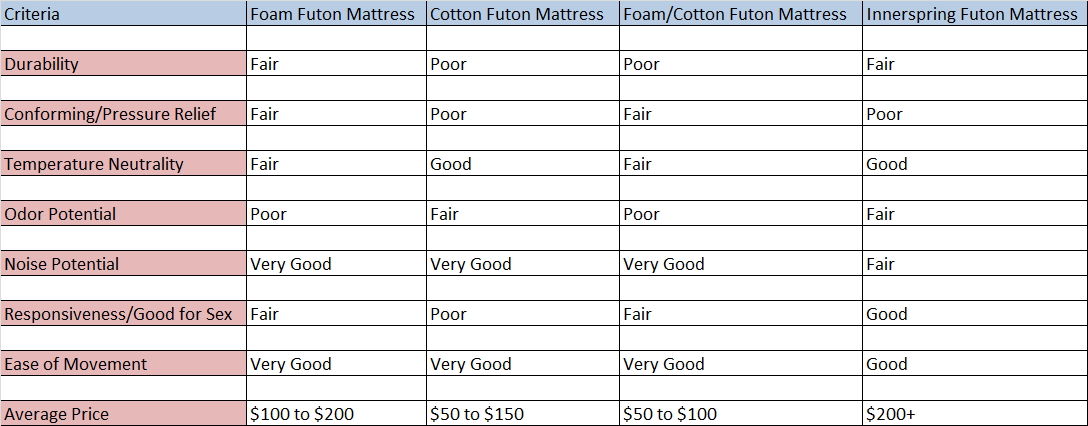Welcome to the best futon for sleeping, here we present you all futon mattresses tested by us in detail. We have compiled detailed background information for you.
With this, we want to make your purchase decision easier and help you find the best futon mattress for you.
Furthermore, you will also find some important information on this page that you should definitely pay attention to if you want to buy a futon mattress.
The futon traditionally comes from Japan and originally refers to a thin mattress that can be folded. The Japanese futon is placed directly on the floor to provide restful sleep. The futon mattress is the European evolution of the classic version, designed to increase comfort.
Futon mattresses usually do not rest directly on the floor but are placed in a low bed frame. Since they are made of various natural materials, they are also heavier than the original futon.
The basis for using futon mattresses is the assumption that you can sleep especially well and restfully close to the floor on your favorite fleece sheet.
In addition, the materials used are said to promote good health. In addition to traditional futon mattresses, you can now also buy sofa beds or couches.
Best futon for sleeping
| Image | Product Information | |
|---|---|---|
|
1. Best Choice
Olee Sleep Tri-Folding Memory Foam Topper |
♦ Thickness: 4 inches ♦ Single size ♦ With supportive memory foam topper ♦ Support neck and beck ♦ Easily fold it up for storage |
|
|
2. High Quality
American Furniture Alliance Jr Twin Black Trifold Mattress |
♦ Material Foam ♦ Dimensions 74 x 30 x 3.5 inches ♦ Weight 8 Pounds ♦ Double-stitched ♦ Spot clean with a damp cloth |
|
|
3. Ultra Soft
Japanese Floor Mattress Futon Mattress |
♦ Material: 100% Cotton ♦ Filling Material: Cotton + Memory Foam ♦ Full Size: 4″ thick x 54″ wide x 80″ long ♦ Weight: 13 lbs |
|
|
4. Super Soft & Fit
Milliard 6-Inch Memory Foam Tri Folding Mattress |
♦ Non-Slip Bottom (75 inches x 31 inches) ♦ The Memory Foam Tri-fold Mattress ♦ With Ultra Soft Removable Cover ♦ Vacuum packaged |
Best futon for sleeping Ultimate Guide
For whom is a futon mattress suitable?
In general, a futon mattress is suitable for everyone. However, it is important to remember that futon mattresses are harder than conventional mattresses. For people without physical ailments, a futon is most suitable.
However, a firm and compact mattress is also recommended for back problems and joint problems, which makes futon mattresses more and more popular among all people.
In addition, the futon is space-saving. It can be rolled up during the day, which increases the space available in your own four walls. Especially students or minimalist living people enjoy this feature of futons.
What distinguishes a traditional futon mattress and what are its advantages and disadvantages?
The traditional futon is very hard for Western sensibilities and thus takes a lot of getting used to. However, it offers outstanding health benefits.
If you believe old Japanese wisdom, a firm, compact sleeping surface makes the body harder and more resistant to illness and pain.
Another point is the materials used, due to which the futon mattress is said to provide particularly restful sleep.
A traditional futon mattress is made of 100% cotton. It is layered in several layers and compactly sewn.
| Advantages | Disadvantages |
|---|---|
✔ 100% natural materials ✔ Gentle on the back ✔ Space-saving when rolled up |
✘ Very hard ✘ High maintenance |
One big point to consider is the increased maintenance required for traditional Japanese futon mattresses.
What makes a futon mattress special?
What makes a futon mattress special is that it is made from natural materials and placed on the floor, or as close to the floor as possible.
Traditionally, it is assumed that one sleeps particularly well close to the floor. Of course, this is not true for everyone – you have to decide individually whether this way of sleeping is good for you.
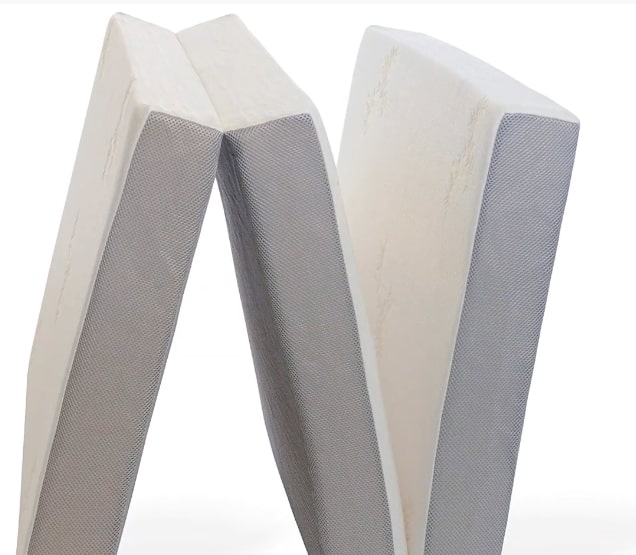
As a result, it does not give way, but after some time it permanently adapts to the sleeping position. Here, too, it depends on your personal feeling whether you prefer this variant to spring.
How to care for a mattress futon for sleeping?
A futon mattress can be cleaned like upholstery or upholstered furniture. If your mattress has light stains, you can wipe them off with a damp cloth. In the case of larger stains, it is also possible to dab the surface with a mild detergent and then wipes it very carefully with water.
Keep in mind that it should never be too wet. If water seeps into the core it can cause irreparable damage and void your possible warranty.
When it comes to general care, there is also a distinction between traditional and modern futon mattresses as follows.
The traditional best futon for sleeping needs to be patted, shaken, and rolled up regularly. This airs out the cotton fibers and prevents them from bunching up.
Additionally, traditional futon mattresses like to be placed in the sun every few weeks so they can dry out completely.
Modern futon mattresses, on the other hand, do not require such regular care.
Here it is enough if you turn the mattress every 14 days in the beginning. After about 4 months it is enough to turn it in every 2-3 months.
Pros and Cons of Futon Mattress Types
Types of modern futons and toppers
Traditional Japanese beds are placed on fairly thick tatami, but in our homes, this would not be very comfortable because the floor is harder. That’s why either special platforms or other additional construction began to be placed under futons.
One of the most important characteristics of futons is their weight. If the mattress is very light, the person sleeping on it can feel the floor or other structure placed under the mattress. Flexibility is another of its features, which is very important if the mattress is intended for use on a bed or sofa.
Modern futons are filled not only with cotton, like traditional options but also with other materials such as polyester, wool, and so on, which have a warming effect and perform a heat-saving function.
The most relevant in recent times are futons filled with materials of natural origin with pronounced rigid-elastic properties:
coconut coir – eco-friendly material of increased rigidity, made of coconut fibers;
Latex is a breathing material produced from the sap of Hevea, giving the product elasticity and resilience;
Memory is an innovative material, able to “remember” the force applied to it and therefore repeat the shape of the person lying on it.
Polyurethane foam is a light and porous material, which gives elasticity and flexibility to the product.
These fillings provide orthopedic support for the spine, good ventilation, do not accumulate moisture, do not create a “greenhouse effect” and contribute to a comfortable temperature balance. Buy topper can be an additional element to the mattress, as it can be used to create additional rigidity, or vice versa soften the orthopedic base.
**Can I put a futon on top of an old mattress?
Yes, if it is a topper – a special thin model of mattresses, which allows you to hide the crushed areas of the old bed, the gaps of folding furniture, and even change the rigidity of the bed.
**Futons are comfortable, moderately dense, and inexpensive. lusher, they can be used over furniture and for sleeping on the floor.
**Can I put foo on top of the old one?
Yes, if it is a topper – a special thin model of mattresses, which allows you to hide the sagging places of the old bed, the gaps of folding furniture, and even change the rigidity of the bed.
***They are comfortable, moderately dense, and inexpensive. Why these … Futons are plumper and can be used over furniture and for sleeping on the floor.
**The futon can in principle already be called a full-fledged mattress. In fact, futons are a full-fledged type of pure cotton mattresses in Japan, which are 8 to 12 cm thick and lie directly on the floor.
**What Is a Futon?
A futon is a small mattress with a height of up to 12 cm, which can be used in different variations, came into our culture from Japan.
***
***They are comfortable, moderately dense, and inexpensive. Why these … Futons are plumper and can be used over furniture and for sleeping on the floor.
For whom is a futon mattress suitable?
What distinguishes a traditional futon mattress and what are its advantages and disadvantages?
What makes a futon mattress special?
How to care for a mattress futon for sleeping?
What Is a Futon?
Types of Futon
Base Structure
Base Material
Design
Top Reasons to Buy a Futon
Who Should Buy a Futon?
Final Take
Types of Futon Mattresses Explained
Who Will Benefit From Using a Futon Mattress?
How to Choose the Right Futon Mattress for Your Needs?
Final Word
What to Consider When Choosing the Best Futons
Futon Frames and Mattresses: Common Styles and Designs
The Advantages of Owning a Futon
FAQs About Your New Futon
Wondering if a futon is a better option than a pullout couch or if you can sleep on it every night? Read on for answers to commonly asked questions about futons.
Q. Which is better, a futon or sofa bed?
Q. How thick should a futon mattress be?
Q. Is it OK to sleep on a futon every night?
Q. Can You Use a Futon as A Regular Bed Every Night?
Q. Are Daybeds More Comfortable Than Futons?
Q. What is The Lifespan of Futon Mattresses?
Q. What does a futon look like?
Q. What to do with the old futon mattress?
Q. How much weight can a futon hold?
Choosing a Futon by Weight and Sleep Position
Considerations for Futon Buyers
When shopping for a new futon mattress and frame, here are a few factors to take into account:
What is your futon budget?
Do you plan to use the futon as a primary or guest bed?
What is your preferred frame style?
Which mattress material(s) do you prefer?
Do you experience frequent back pain?
How much do you weigh?
How tall are you?
Does the futon come with a warranty?
About Author: Emily Ware






